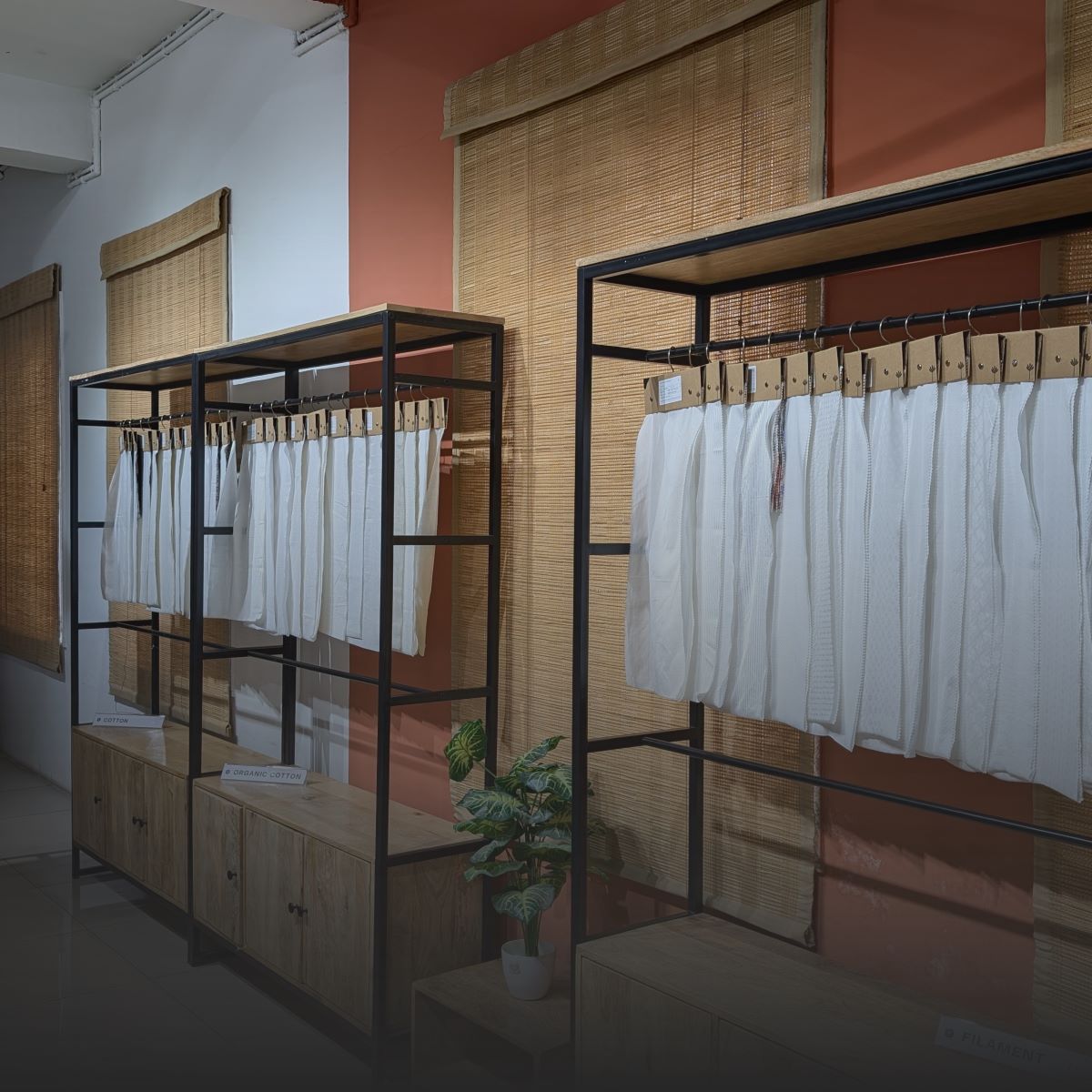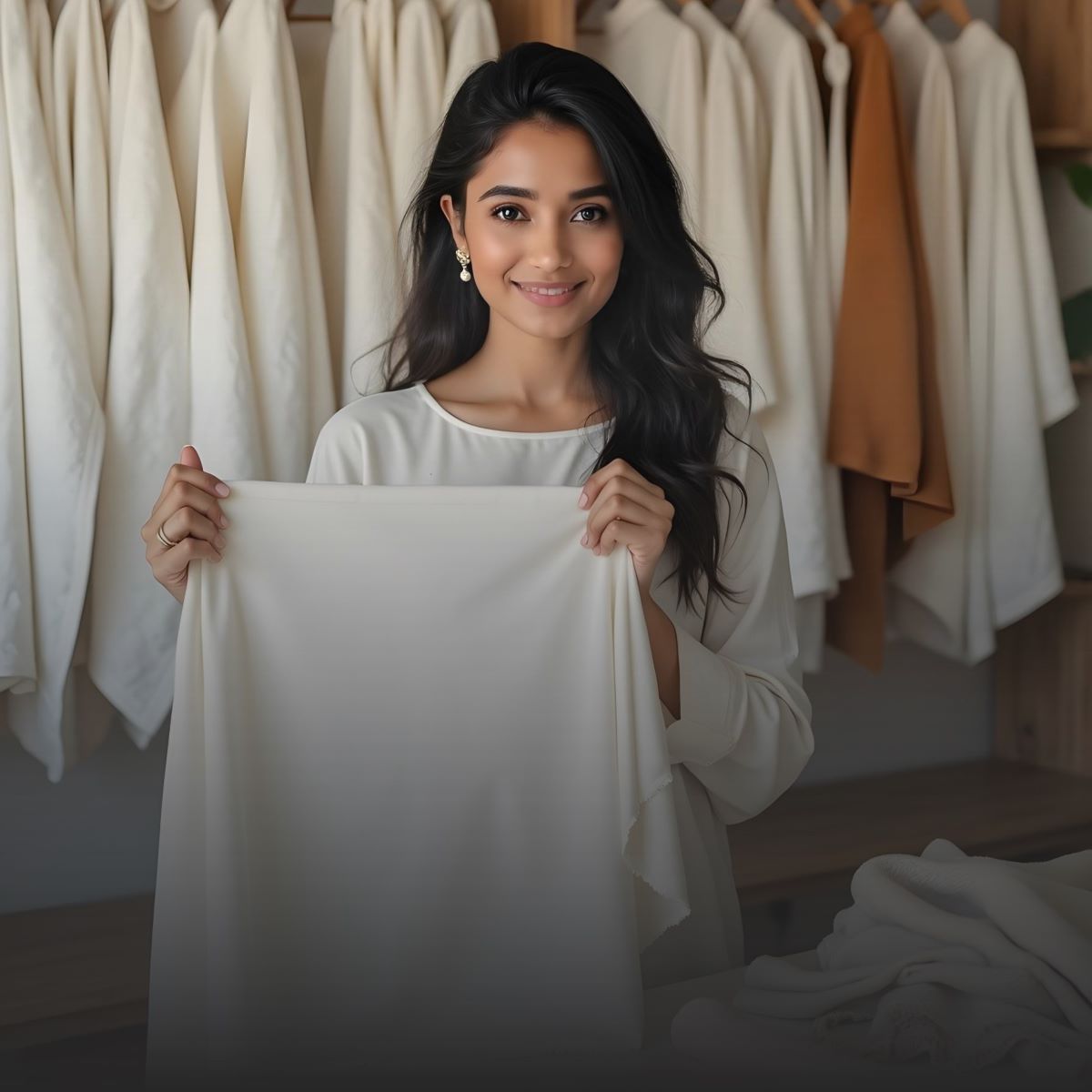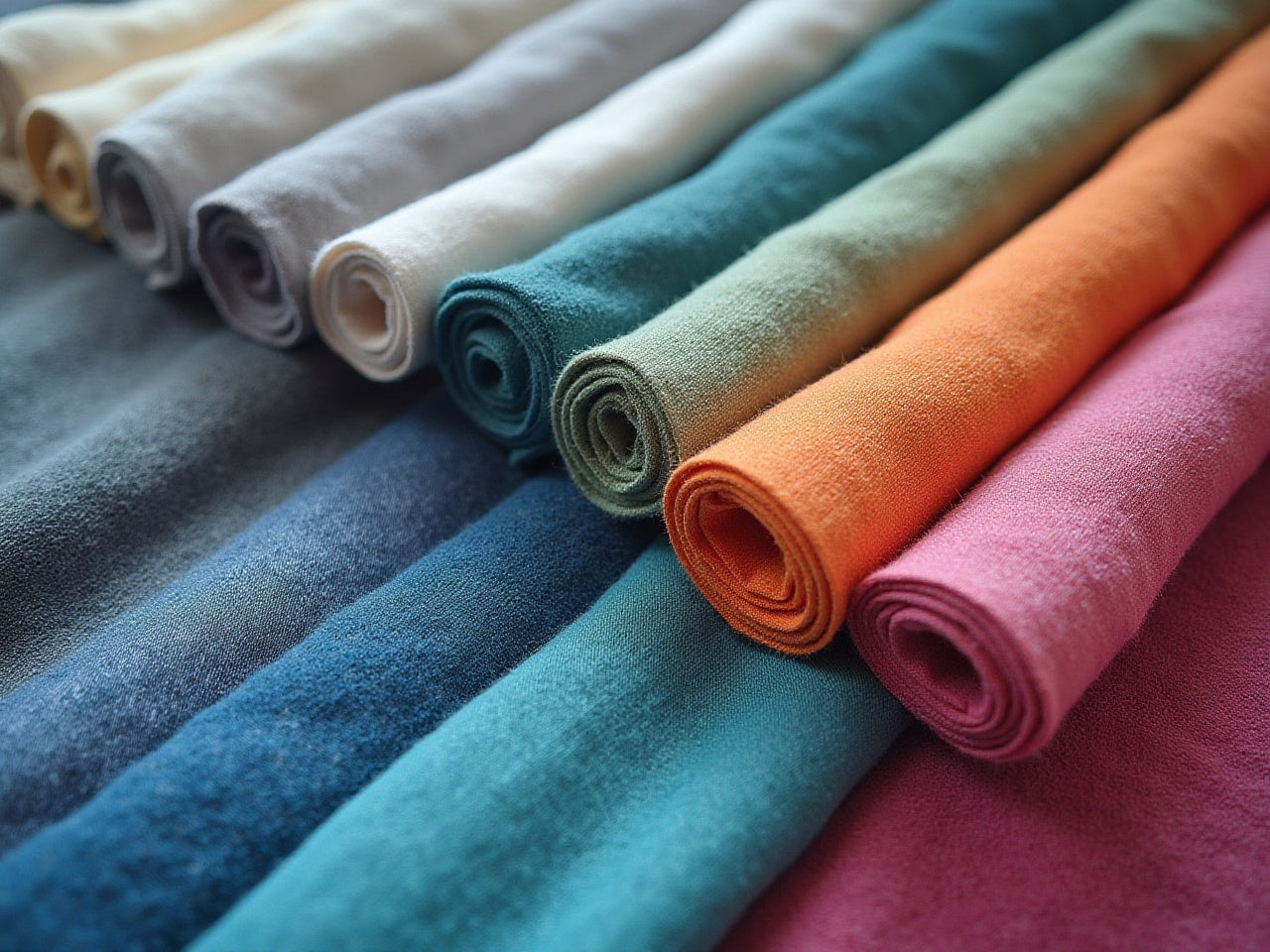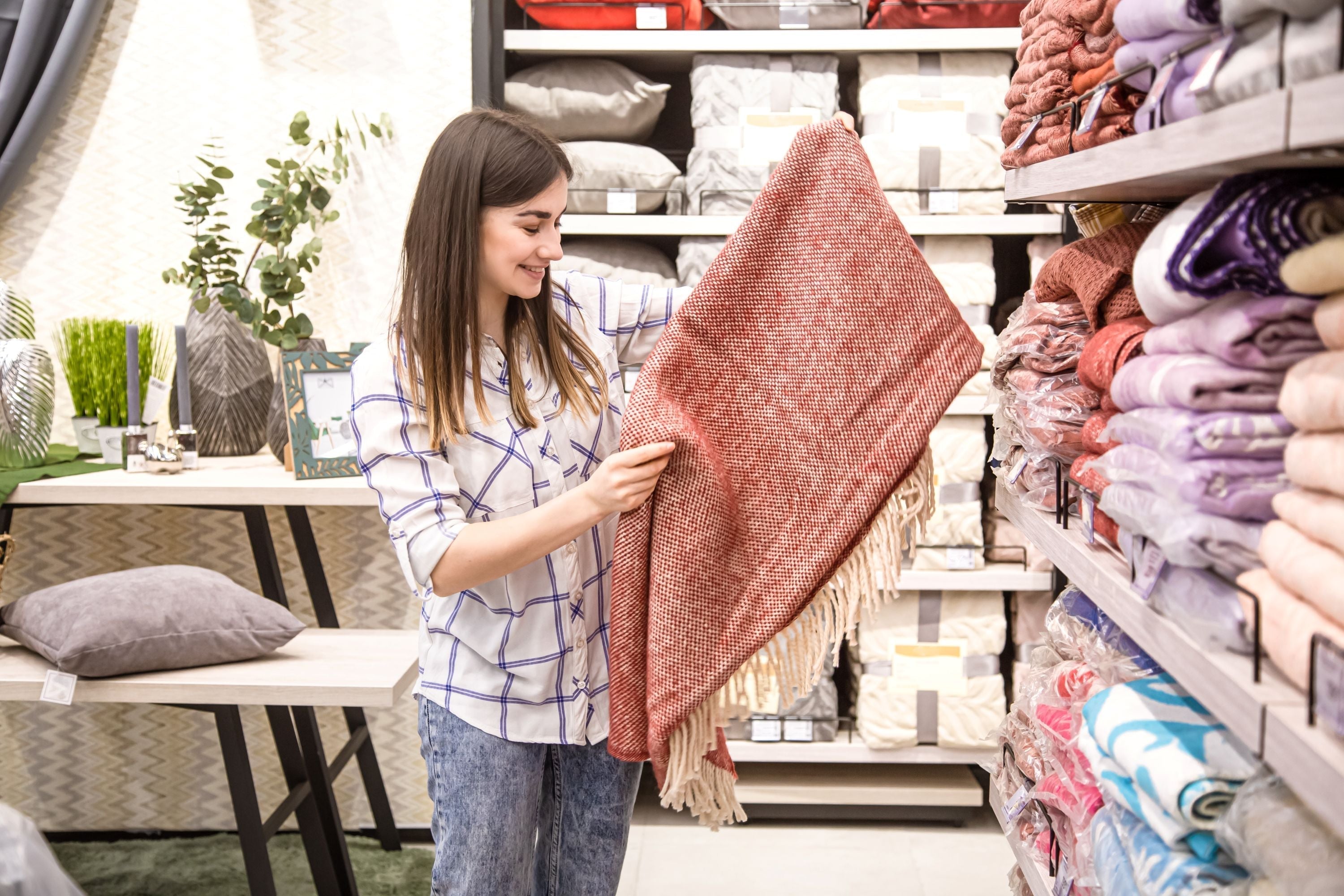In apparel production, every stitch begins with fabric. If the material is flawed, no design or machinery can cover that up. Fabric quality impacts not just the appearance of the garment but how well it performs during cutting, sewing, dyeing and even end-use. For manufacturers, the poor fabric can turn into rejections, wasted inventory and delayed deliveries.
Early-stage inspection helps brands and factories avoid those risks. Before the fabric even enters the cutting table, trained teams or machines should examine it for inconsistencies, structural flaws or other signs of substandard output. This step is not optional if you care about quality.
Common problems that fabric inspection helps catch include:
- Uneven color across batches or within a roll
- Defects like holes, broken yarns or misweaves
- Wrong GSM (weight) or fabric density
- Contamination from dust, oil or handling errors
- Shrinkage or bleeding issues are not visible
Left unchecked, these issues can disrupt your entire workflow. Once garments are cut and sewn, there is no easy fix. That is why fabric inspection is a non-skippable step for manufacturers who prioritize consistency and scale. It ensures every order starts on the right footing before the needle touches the cloth.
Key Services Included in Fabric Quality Assurance

Fabric quality assurance covers more than checking for visible damage. It looks at how the fabric performs under real-world conditions, whether it shrinks, fades or tears too easily. These checks help spot problems before the fabric enters production.
Most inspections follow a process that includes both manual checks and technical testing. The goal is to confirm that the material matches the order, holds up during use and will not cause issues in cutting or stitching.
Here are the most common services offered during fabric quality checks:
-
Visual inspection to catch issues like holes, slubs, skipped yarns and color patches
-
GSM testing to confirm the fabric’s weight per square meter
-
Shrinkage testing to see how much fabric changes after washing
-
Colorfastness testing for resistance to rubbing, washing or exposure to light
-
Tensile strength checks to measure how much pressure the fabric can handle
-
Width and length verification to ensure the supplier delivers the correct size
- Surface checks for moisture, stains or dust that may affect finishing
Some suppliers offer a full package and others keep it basic. Without a clear quality check in place, small issues can become big problems in bulk production.
If you are placing large orders, it is worth asking exactly which tests are included. The right QA service saves time, money and production losses.
Types of Fabric Inspection Methods Used by Professionals
Fabric inspection is not the same everywhere. The method depends on order size, fabric type and the kind of quality issues a manufacturer wants to avoid. Some checks are done by hand. Others use machines that scan each roll for flaws.
Two of the most used methods in the textile industry are the 4-point and 10-point systems. These assign penalty points based on the type and size of defects found on the fabric. The lower the score, the higher the quality.
Here is how professionals typically inspect fabric:
-
4-Point System: Flags major and minor defects with a simple point scale. Often used for garments and home textiles.
-
10-Point System: Common in the US, this method is stricter and usually applied to finer fabrics or critical-use materials.
-
Manual Inspection: Trained staff unrolls and checks fabric under proper lighting. Good for small batches or customized orders.
-
Automated Inspection: Uses sensors or scanners to catch flaws like weft misalignment or repeating patterns. Best for bulk and fast-paced operations.
-
In-Line Inspection: Takes place during fabric processing or production, helping fix problems early.
- Final Inspection: This happens before the fabric is packed or shipped. This is the last step to confirm the fabric is ready to use.
Choosing the right method depends on how critical the fabric is to the final product. If the garment is part of a high-volume retail order, automated inspection may be safer. For niche items or designer batches, manual checks often do the job.
These systems do not just find flaws. They help track trends in supplier performance and fabric reliability over time.
Who Typically Provides Fabric Inspection and QA Services

Not all fabric suppliers offer inspection and quality testing in-house. Some rely on third parties, while others build internal teams for full control. If you are sourcing at scale, it is important to know where these services come from and how they fit into the supply chain.
You will usually find four types of providers handling fabric inspection and quality checks:
1. Third-Party Testing Agencies
Independent labs like SGS, Intertek and Bureau Veritas handle fabric inspections worldwide. They follow international standards and issue detailed reports. These agencies are often used for export orders, high-value fabrics or when working with new suppliers.
2. Textile Mills with In-House QA
Some mills offer full inspection before dispatch. They test the fabric on-site, verify order specs and run basic strength or shrinkage tests. This works well if you are sourcing directly from manufacturers who already follow quality benchmarks.
3. Independent Fabric Labs
Smaller, specialized labs test specific properties like GSM, tear strength or colorfastness. These are useful for brands that want a second opinion or need testing without a full third-party contract.
4. Sourcing Platforms with Integrated QA
Platforms like Fabriclore combine fabric sourcing with inspection. They run in-house checks for defects, handle dye fastness tests and offer shrinkage reports. This setup helps reduce back-and-forth between vendors and testers. It also ensures quality is verified before the order leaves the warehouse.
Knowing who handles the inspection gives you better control. It also helps build a process where quality issues are caught early, not at the last minute.
Top Fabric Inspection and QA Service Providers for Apparel Brands
The right inspection partner can save you from costly returns and delivery delays. What matters is how well they align with your product type, order size and production speed. Some offer end-to-end checks in-house. Others rely on lab networks across multiple countries.
Here are some of the most trusted names in fabric quality testing:
Fabriclore
Fabriclore provides fabric sourcing with built-in quality control. Every order goes through in-house testing for GSM, shrinkage and color accuracy. Visual checks cover over 20 types of defects before dispatch. By combining sourcing and inspection in one place, Fabriclore helps manufacturers save time and reduce coordination hassles. This setup works well for small batches, made-to-order runs and bulk production alike.
SGS
A global leader in lab testing, SGS offers textile inspection in over 100 countries. Their services include fiber testing, defect scoring and performance checks. SGS is often the first choice for large brands and export-ready manufacturers.
Intertek
Intertek supports fashion supply chains with detailed testing and product validation. Their inspection covers strength, washability and visual flaws. Their global network makes them a go-to for compliance across markets.
Bureau Veritas
Known for field inspections and fast lab results, Bureau Veritas has a strong presence in Asia and Europe. They work with factories, mills and sourcing agents to monitor fabric quality at every step.
QIMA
QIMA combines digital booking with real-time inspection updates. Their platform suits brands that want flexible scheduling or faster response times. Lab testing is available for physical and chemical properties.
Local providers in sourcing hubs like India, Turkey, Vietnam and Eastern Europe also offer good support. They may be faster for small runs or regional supply chains.
Choosing a reliable partner is not about going with the biggest lab. It is about finding one that understands your needs and can deliver accurate, timely results.
What to Look for in a Reliable Fabric Inspection Partner

Not all inspection services are equal. Some focus on surface checks. Others dig deeper with lab analysis. The right partner should match your order type, volume and quality expectations.
Before choosing, it is important to ask a few basic questions. A dependable QA partner should do more than just check boxes; they should help you avoid risk and build consistency.
Here are key factors to consider:
- Scope of Testing
Check if they offer both visual and lab-based tests. Look for services like GSM verification, shrinkage checks and colorfastness.
- Certifications and Standards
Make sure the provider follows industry benchmarks. Look for ISO accreditation, OEKO-TEX or other textile-specific standards.
- Experience with Fabric Type
Some labs are better with synthetics. Others specialize in natural fabrics or blends. Choose one that knows the material you are working with.
- Reporting Format
The results should be clear, specific and actionable. Avoid vague summaries. Ask for sample reports before finalizing.
- Turnaround Time
Testing delays can hold up production. Find out how fast they inspect and deliver results, especially for urgent or made-to-order runs.
- Communication and Support
You need updates without chasing. A good partner keeps you informed and shares inspection outcomes as they happen.
Cost matters, too, but it is not the only thing. Saving on inspection may cost you more later if errors go undetected. Reliable QA helps you build a trusted production cycle, avoid returns and meet buyer expectations every time.
How Fabriclore Assists Apparel Manufacturers with Quality Checks
Fabriclore does not treat quality assurance as a side process. For every order, quality control starts early and continues through every step, from fabric sourcing to final dispatch. This is part of what makes their model work for growing fashion brands and scaled-up manufacturers alike.
Their in-house inspection covers over 20 types of fabric defects. These include surface flaws, inconsistent dyeing, GSM mismatches and shrinkage risk. Before the fabric is packed, it is tested for width, colorfastness and construction integrity.
Here’s what’s included in Fabriclore’s QA workflow:
-
Inspection of each fabric roll for holes, slubs or weaving defects
-
Shrinkage and GSM checks across fabric types
-
Color testing for both RFD and mill-dyed fabrics
-
Pre-packaging review for cleanliness, meter accuracy and labeling
-
In-house support for ready stock, dyed, printed and custom fabrics
- Custom testing available for sustainable fabrics like Bemberg™, LIVA™ and Tencel™
Because Fabriclore combines sourcing and quality under one system, it removes the need for coordination between mills, labs and agents. For manufacturers, that means fewer delays, faster resolution of issues and more confidence in every shipment.
This makes their offering especially useful for brands working with low MOQs, tight deadlines or specialized fabrics. The fabric you receive is already checked, tested and prepared for cutting, which means less waste, fewer complaints and a smoother start to garment production.

Conclusion
Fabric checks help avoid waste, delays and costly mistakes. By finding defects early, you reduce returns, rework and production stops. It also saves money in the long run.
Quality checks keep your products consistent. If one batch looks or feels different, it affects trust. Regular inspection makes sure every roll meets the same standard.
A strong supply chain starts with reliable fabric. When vendors handle sourcing and QA together, as Fabriclore does, you get better control. It is easier to meet deadlines, maintain quality and grow with confidence.
FAQs
What is fabric quality assurance in garment manufacturing?
It is the process of checking fabric for defects, performance and consistency before it is used in production. This includes visual checks and lab tests like shrinkage and colorfastness.
Who is responsible for fabric inspection, the buyer or the supplier?
Responsibility depends on the agreement. In many cases, suppliers handle basic checks. However, buyers often request additional inspection or use platforms like Fabriclore that offer in-house QA.
What are the most common fabric defects?
Typical issues include holes, slubs, color variation, incorrect GSM, misweaves and stains. These can affect garment quality if not caught early.
How do I choose the right fabric inspection service?
Look for clear testing processes, experience with your fabric type and reliable reporting. Also, check turnaround time and communication quality.
Can low-MOQ orders also get quality checks?
Yes. Platforms like Fabriclore offer quality checks even for small runs. This is helpful for emerging brands and custom orders.
What happens if fabric defects are found after delivery?
Inspection reports help resolve such issues. Always work with vendors who document inspections and offer responsive support.




